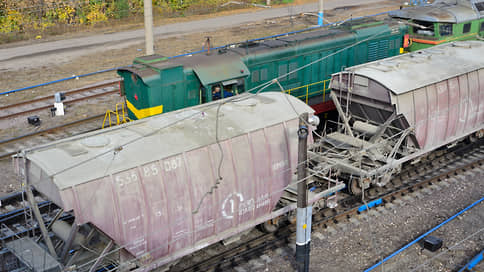The volume of cement transportation by rail has decreased in favor of road transport
[ad_1]

The volume of cement transportation via one of the main logistics channels—railroad—has decreased for the first time since the beginning of the construction season in favor of road transport. Market participants point to a shortage of locomotives and an increase in wagon turnaround times. But the transition to automobile logistics is complicated by a shortage of drivers and rising tariffs, which may affect the cost of cement.
The volume of cement transportation by rail in July decreased by 1.1% year-on-year, to 2.85 million tons, Soyuzcement calculated. The indicator decreased in annual terms for the first time since the beginning of the current construction season: since March, the volume of rail transportation has been growing. The decrease is recorded in conditions of active demand for cement. According to preliminary estimates by Soyuzcement, in July consumption of construction materials increased by 7.3% year-on-year, to 7.4 million tons, production – by 5.9%, to 7.2 million tons.
Railroad is one of the main ways of transporting cement along with motor transport, but the gradual decline of its role, the director of the analytical center of the National Association of Manufacturers of Building Materials and the Construction Industry (NOPSM), Evgeniy Vysotsky, calls a stable trend. According to NOPSM, in the first half of 2023, the share of railway transport in the supply structure decreased from 41.5% to 41.2%. Deliveries by road transport in physical terms over the six months increased by 5.4% year-on-year, to 17.5 million tons, by rail – by 4%, to 12.2 million tons.
Soyuzcement executive director Daria Martynkina says that in July the volume of railway shipments of cement was less than the volume of agreed requests due to insufficient or untimely provision of rolling stock to enterprises. According to her, problems arise due to an increase in the period of technological turnover of cars, a shortage of locomotives and crews, and untimely acceptance of loaded cars. Many market participants, adds Ms. Martynkina, are today denied approval of applications for the transportation of goods.
JSC Russian Railways told Kommersant that in January-August the volume of cement loading within the country decreased year-on-year by 1%, to 17 million tons, and the loading of all construction cargo increased by 1.8%, to 90.2 million tons. They stated that all applications are agreed upon in full, and transportation of construction materials and cement is carried out as a priority. JSC Russian Railways is also exploring options for speeding up the promotion of individual consignments with shippers. General Director of Infoline-Analytics Mikhail Burmistrov notes that cement suppliers may be in a more vulnerable position, including due to an acute shortage of cement hoppers. Their purchase and construction are now less profitable than grain carriers and wagons for transporting mineral fertilizers, the expert points out.
Evgeny Vysotsky notes that reorienting the market towards road transportation is a slow process. According to him, many production of reinforced concrete products are designed to receive cement by rail and they will require the installation of special equipment. Rail transportation is also considered more profitable over long distances, and direct road transportation is more priority for distances of up to 300–400 km, Mr. Vysotsky noted.
Denis Nazarov, Director of Purchasing and Logistics at Tsemros, says that his company is now using water and road transportation, but it is difficult to increase supplies. In the first case, the geographical location of production and consumers is an obstacle; in the second, there is a shortage of drivers and an increase in the delivery time for semi-trailers to six months. There are also problems with the purchase of automobile cement tankers, which were previously imported from the EU, Mr. Vysotsky added. Mikhail Burmistrov notes that tariffs for road transportation have increased by 40% since the beginning of the year due to rising prices for transport, spare parts, gasoline and an acute shortage of drivers. According to him, this creates additional risks of increasing the cost of cement and difficulties with delivery.
Mr. Burmistrov believes that the way out of the logistics crisis for the cement industry is the modernization of the production facilities themselves. In his opinion, enterprises may reorient themselves to the production of more expensive products, such as dry construction mixtures, or look for alternative packaging options. Cement in a big box (dense packaging of large volume) can be transported in gondola cars, the expert noted.
[ad_2]
Source link





